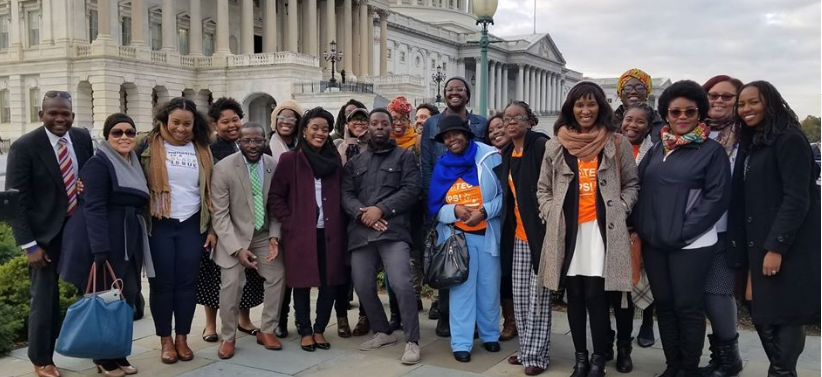[Black Immigration\U.S. Economy]
Black immigrants have higher than average rates of naturalization and English language proficiency among immigrants. They also serve in critical roles in the healthcare industry—an industry facing unprecedented labor shortages.
Photo: Facebook
The New American Economy (NAE), a bipartisan immigration research and advocacy organization, to cap off Black History Month this year has released a new report called “The Power of the Purse: The Contributions of Black Immigrants in the United States.”
In the report, NAE takes a look at how Black immigrants in the United States are making their mark today as workers, consumers, taxpayers, and voters. Compared to larger immigrant groups like Hispanics or Asians, there has been little research on Black immigrants’ socioeconomic characteristics. In fact, a previous NAE report that only looked at immigrants from Sub-Saharan Africa also fell short in this respect. This year, we expand our scope to look at Black immigrants from all over the world to better reflect the wide diversity of these new Americans, regardless of their country of birth.
What the numbers reveal is that the influence of Black immigrants is increasing rapidly. Some of this is due to the growth of their population in the United States. Between 2010 and 2018, the number of Black immigrants grew from 3.3 million people to more than 4.3 million—an increase of 30 percent. And despite politicking stating otherwise, our findings show that Black immigrants punch well above their weight in many respects.
Black immigrants have higher than average rates of naturalization and English language proficiency among immigrants. They also serve in critical roles in the healthcare industry—an industry facing unprecedented labor shortages. We also find that African immigrants, many of those who come through the diversity visa lottery or as refugees, actually have much higher levels of educational attainment than the overall U.S. average. Altogether, we find that Black immigrants are significant contributors to the U.S. economy. In 2018 alone, they earned more than $133 billion, paid almost $36 billion in taxes, and had a spending power of nearly $98 billion.
KEY FINDINGS from “The Power of the Purse: The Contributions of Black Immigrants in the United States” include:
The number of Black immigrants has increased significantly since 2010, growing by 30 percent from 3.3 million in 2010 to 4.3 million in 2018. Today, they make up more than 1.3 percent of the total U.S. population. Texas, in particular, has seen its Black immigrant population increase significantly. From 2010 to 2018, the number of Black immigrants increased by almost 81 percent, from 161,500 to 292,100. Today, it has the largest population of immigrants from Africa (221,700) in the United States.
- Today, there are more than 2.3 million eligible Black immigrant voters. With significant numbers of voters in New York (553,800), Florida (413,700), New Jersey (140,800), Maryland (140,000), and Texas (121,000).
- In 2018 alone, Black immigrant households earned $133.6 billion, paid $36.0 billion in taxes ($22.8 billion in federal income tax and $13.2 billion in state and local taxes), and had a spending power of $97.6 billion.
- Black immigrants are particularly active in the health care industry, especially as nurses, personal care aides, and nursing assistants. Almost 3 in 10 (27.5 percent) of all Black immigrant workers—or more than 750,000—work in the healthcare sector.
- Among all immigrants, Black immigrants have the highest rates of English language proficiency. More than 90 percent of Black immigrants speak English well or only speak English, compared to nearly 60 percent of Hispanic immigrants and about 81 percent of Asian immigrants.
Special note by the NAE: [1] We define a Black immigrant as any person 1) born outside the United States to non-U.S. citizen parents and who 2) identifies as Black or African American in the American Community Survey. This includes naturalized citizens, legal permanent residents, temporary residents, international students and researchers, undocumented immigrants, and refugees and asylum seekers.
For more information log on to https://www.newamericaneconomy.org/






